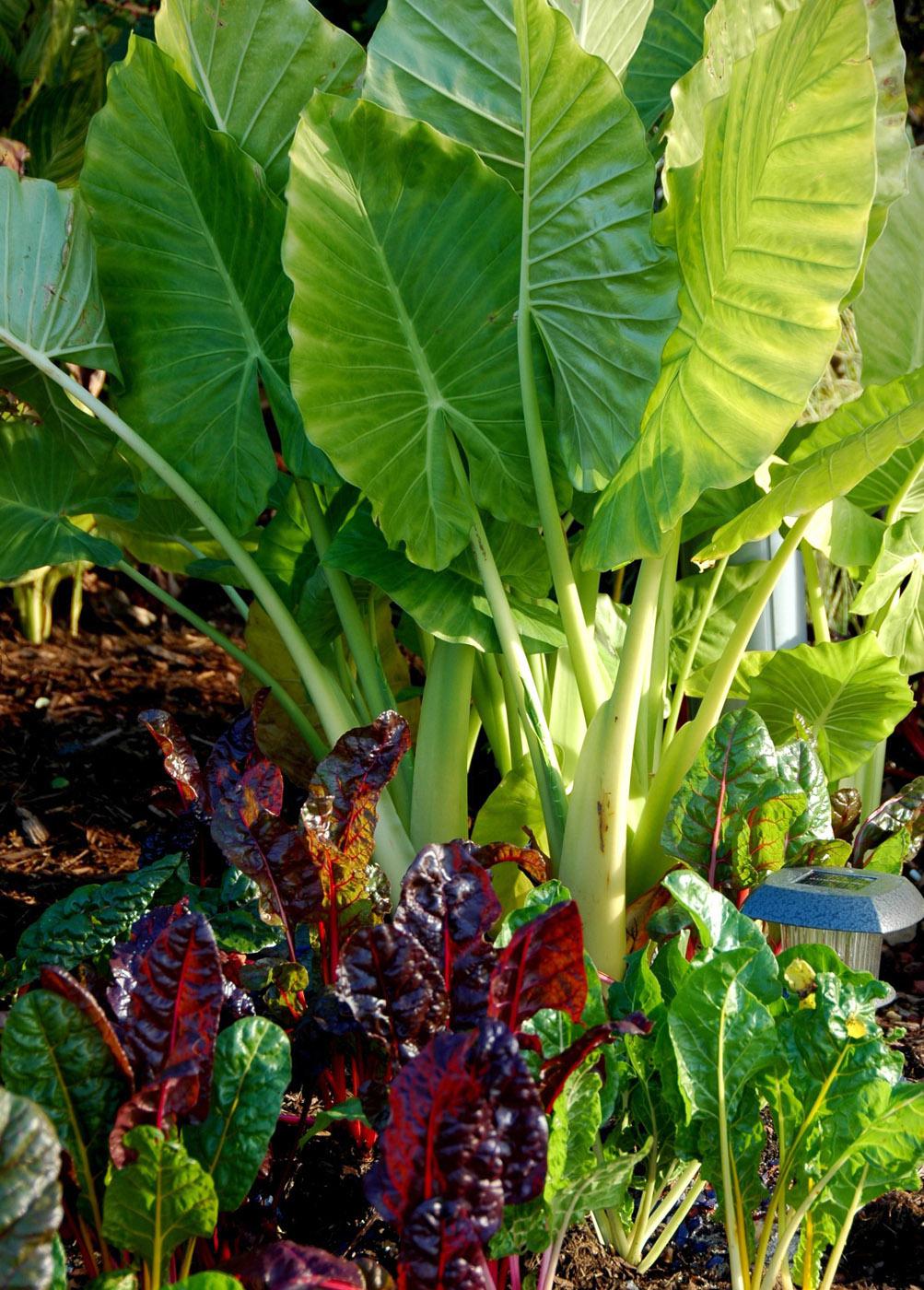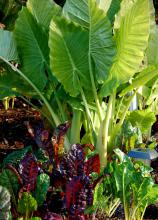Information Possibly Outdated
The information presented on this page was originally released on August 27, 2009. It may not be outdated, but please search our site for more current information. If you plan to quote or reference this information in a publication, please check with the Extension specialist or author before proceeding.
Edible plants have place in landscape
MISSISSIPPI STATE – Quick. What is colorful, architecturally interesting and tasty? Up until “tasty,” lots of answers come to mind, but one that fits all three descriptions is edible landscape plants.
Norman Winter, horticulture specialist with the Mississippi State University Extension Service, said edible plants are often grown for their looks rather than for the table.
“We like what many edible plants do for the landscape,” Winter said. “Some offer colorful foliage, making them great partners with flowers, and others offer interesting texture with their big leaves. Some give architectural structure to the garden by their presence.”
Winter said cardoon, Slim Jim eggplant and Redbor kale are recent Mississippi Medallion award-winners and edible landscape plants. Cardoon makes a dramatic statement in the flower border with its long, arching, deeply toothed, soft gray-green foliage. In late summer, it produces 6-foot-tall spikes with thistle-like, blue-violet or purple blooms.
The Slim Jim eggplant adds drama to gardens and landscapes with its purple foliage and fruit.
“It can be grown wonderfully with your choice of yellow flowers, such as marigolds, lantanas or zinnias,” Winter said.
Flowering Redbor kale is among the best cool-season plants and produces vibrant, dark purple foliage from October through April, bringing the winter garden alive. Hill Country okra has large, palmate leaves, red stems and flowers that look like its relative, the hibiscus. It produces very large okra pods that can be eaten.
“Because of its structure, it would work beautifully planted with elephant ears, bananas or another tropical plant,” Winter said.
Red giant mustard or regular leaf lettuce partners well with pansies, dianthus or snap dragons, and it is tasty when picked while it is tender and cooked. Winter said a hanging basket of leaf lettuce is as pretty as a Boston fern, but it is hardly ever grown this way.
Darla Pastorek is a biological science technician at the U.S. Department of Agriculture-Agricultural Research Service’s Thad Cochran Southern Horticulture Laboratory in Poplarville. She gave a workshop this summer at MSU’s Crosby Arboretum in Picayune on using edible native and non-native plants in the landscape.
She said she prefers growing edibles in the landscape rather than in a vegetable plot, and she often chooses them for their color and texture.
“It adds more excitement for me when there is more going on in the landscape,” Pastorek said. “If you tuck a vegetable in the landscape, when it dies out, you don’t notice it as much and you can replace it.”
Pastorek also chooses trees and shrubs for their edible characteristics and named several that are useful for landscapes:
- Serviceberry -- fruit is small and sweet; small tree with showy white flowers; wonderful bird food.
- Chinkapin or chickapin -- produces nuts that used to be very popular; often used for flour.
- Pawpaw tree -- custardy, banana-flavored fruit about the size of a fist; flowers are small and a rusty, burgundy color.
- Crabapple – small, thorny trees with fragrant flowers and beautiful, cinnamon-colored bark; great fall color; hard, tangy fruit is about the size of a small plum and can be made into jellies or jams.
- Red mulberry -- beautiful specimen tree; fast grower; produces thumb-sized fruit that is delicious and popular with mockingbirds.
Pastorek likes to see other edible plants in the landscape, too. These include artichokes, which produce beautiful, gray foliage and fruit; wood sorrel, a small, mounding groundcover whose underground stem base is very sweet and can be used in salads; asparagus that can grow into ferns; ornamental Swiss chard that works well with roses; colorful and flavorful peppers; and fennel, a good herb to have on hand that also attracts butterflies.
When using edibles in the landscape, be sure to check labels carefully if using any kind of chemical to control diseases or pests. Use only chemicals that are labeled for use on garden plants that will be eaten. Those labeled for use in the landscape should not be sprayed on plants intended for the dinner table.
“Just let nature take its course. If your garden is alive, it’s getting eaten,” Pastorek said. “Sometimes you just have to share.”
The Crosby Arboretum is offering another workshop on edible landscapes Nov. 7. Contact Pat Drackett at (601) 799-2311 or drackett@ext.msstate.edu for more information.









